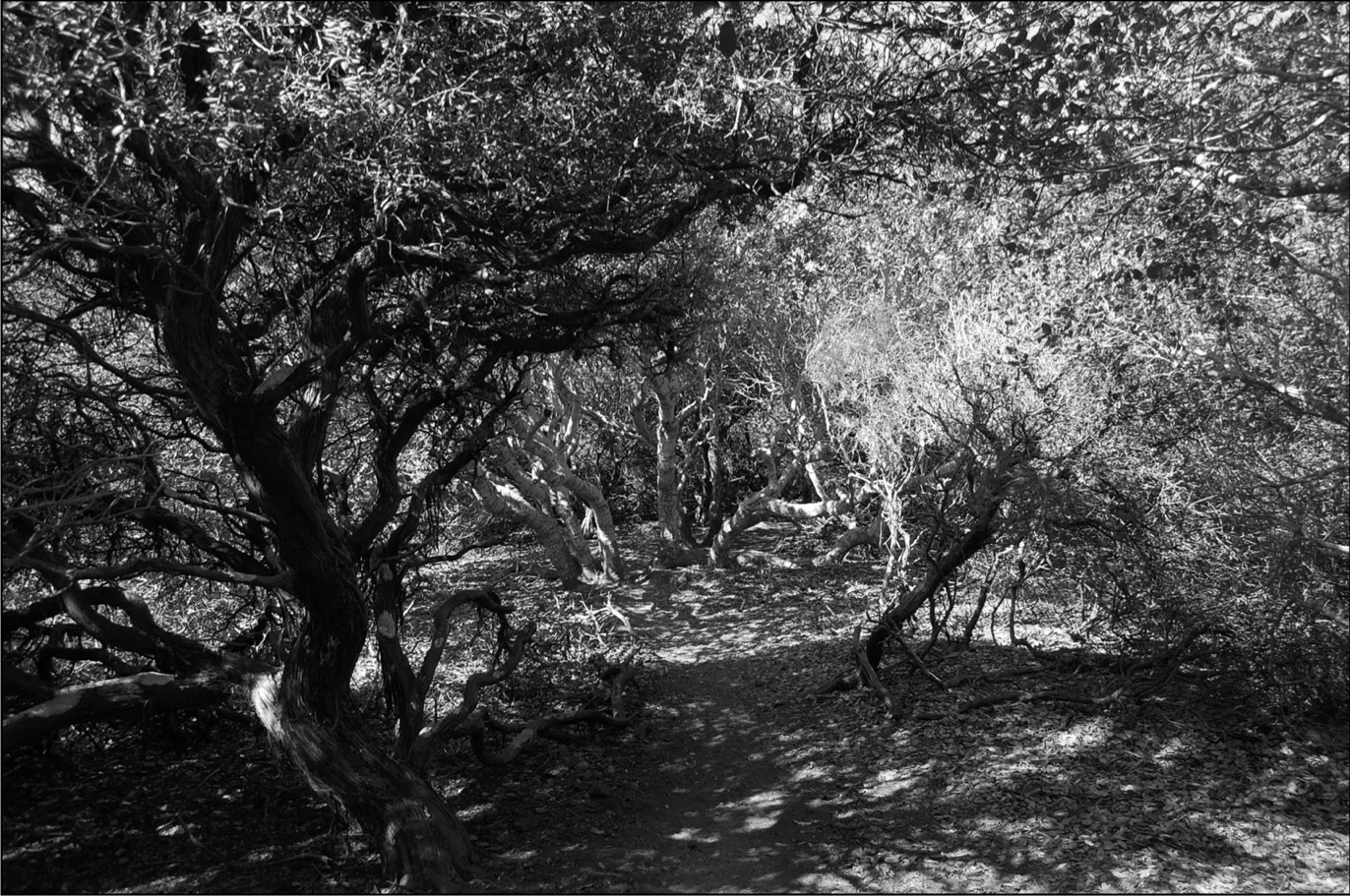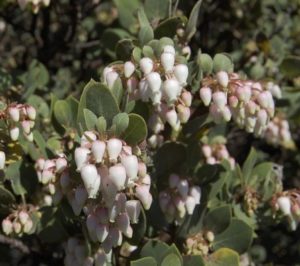In our November 2019 newsletter we discussed the Los Osos Habitat Conservation Plan, a plan prepared by the County of San Luis Obispo to address the impacts of development in Los Osos. In that plan there is a great deal of discussion of the Morro manzanita, Arctostaphylos morroensis, a plant that is listed by the U.S. Fish and Wildlife Service (USFWS) as Threatened under the authority of the federal Endangered Species Act. It is also a list 1B species, indicating rarity in California and elsewhere. What may not be as well known is that Morro manzanita is also the dominant vascular plant species of a rare natural community known as Morro manzanita chaparral, the Arctostaphylos morroensis Shrubland Alliance, as defined by the Manual of California Vegetation (Sawyer, Keeler-Wolf and Evens, 2009). This is an example of a natural community that is dominated by a listed species. Not all sensitive natural communities are.
Morro manzanita chaparral has a global ranking of G1 and a State ranking of S1, which is the highest (and rarest) ranking a natural community can have. Remember the Giant coreopsis scrub that we reviewed in our last newsletter? That community was G3, S3, also sensitive, but not as sensitive as the Morro manzanita chaparral, at least according to the California Department of Fish and Wildlife (CDFW) VegCAMP program. The Program and the CNPS Vegetation Program review the rankings, which are based on the NatureServe’s Heritage Methodology.
Morro manzanita chaparral occurs in three primary areas in the Los Osos/Montana de Oro area. It occurs north of town in the Elfin forest and northeast of the Middle School; south of town on the north-facing slopes above Highland and Rodman Drive; and in two large stands in Montana de Oro State Park. The Plant Communities committee of the SLO Chapter has sampled each of these areas using the Rapid Assessment techniques of the VegCAMP program, and we have found that in the 4 stands sampled, the cover of Morro manzanita varies from 23 to 85 percent, with the average being 53 percent. Other species occurring in these stands include chamise, wedge-leaved Ceanothus (Ceanothus cuneatus), and coast live oak. There are many other species, such as monkeyflower, black sage, and phlox-leaved bedstraw (Galium andrewsii), but they occur at very low cover values. The stands are almost impenetrable due to the low shrubby branches of the manzanita, and if it weren’t for already created trails in some of these areas, it would be difficult to walk through them. Two stands we sampled are located on north slopes; one on a south slope, and another on a fairly flat surface. On the Geologic Map of the San Luis Obispo-San Simeon Region (1979), all are shown to be on dune sands, but there are outcroppings of soft shales in the Cabrillo Heights area.
Many interesting mushrooms, bryophytes, and lichens occur in this community.
One of my favorite lichens is the pixie-cup lichen (Cladonia sp., see photo), which can be found on the moist soils alongside the trails beneath and sometimes on the lower bark of the Morro manzanitas. There are several species in the area. One very rare species, Cladonia firma, occurs primarily in the coastal sage community just north of the Morro manzanita chaparral in the Morro Dunes Ecological Preserve, but it also filters into the chaparral in some areas where the two communities intermix as a mosaic. A unique mushroom I found two years ago in the stand south of Highland Drive is the coral mushroom (Ramaria sp., see photo). I almost felt as if I was underwater when I saw it! It was growing under the manzanita in colonies with other mushrooms.
Also occurring within this community is the Indian Knob mountainbalm (Eriodictyon altissimum), a species that is listed by the USFWS and the CDFW as Endangered. It is also a 1B species. This species occurs in only a few other areas in San Luis Obispo County, at Indian Knob near San Luis Obispo, and in Hazard Canyon at Montana de Oro. It appears to establish clones from rhizomes, and, like the Morro manzanita chaparral, is fire-dependent.
Morro manzanita chaparral is a very rare natural community that is seriously threatened. It’s location near Los Osos provides a unique habitat for contemplation, exercise, and enjoying nature. However, in some areas, it is being loved too much. Individual plants are being trimmed haphazardly by unofficial trail makers. Erosion of the very sandy soils is sometimes severe, creating extensive scars, exacerbated by foot and horse traffic. The issue of fire clearance to keep the public safe needs to be studied and addressed if it proves to be detrimental. And, although some populations are preserved, as always, we need to be ever vigilant of development being proposed within the area.
Photo Credits: Inside the Manzanita Canopy: David Chipping, Coral Fungus: Melissa Mooney, Morro Manzanita Flowers: David Chipping, Cladonia sp. Melissa Mooney
Two components of the Morro Manzanita Chaparral Natural Community. Left: Galium andrewsii; Right: Ceanothus cuneatus var. fascicularis Photos: David Chipping






